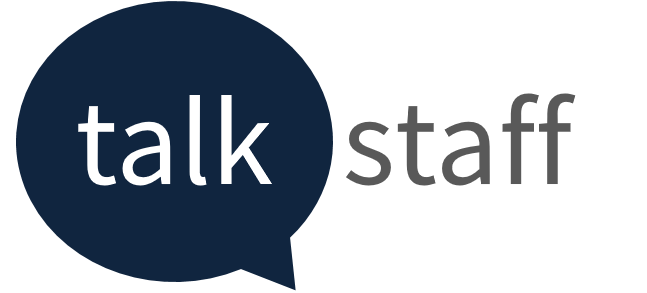Exploring the Equality Act 2010 and how to navigate it in 2024 and beyond.
The importance of the Equality Act 2010
The Equality Act 2010 may be nearing its 15-year milestone but it still underpins many of the DEIB (Diversity, Equality, Inclusion and Belonging) opportunities & HR policies for people managers, HR departments and organisations across the UK.
The Equality Act has evolved over the years with many related HR legislations which work in tandem. For ambitious organisations this continues to help build a more inclusive future with all the commercial and people-centric advantages that come with it, such as the diversification of the talent pool in your hiring strategies.
However, on the flipside this act has been a thorn in the side of many companies who haven’t implemented new and existing HR legislation, especially as this continues to change. For example, Indirect Discrimination is one of the latest ways the law has evolved to protect employees further.
Therefore, adapting to these changes in a swift and compliant manner is an essential element of any company’s HR operations.
The Equality Act has cost companies significant amounts in employment tribunals over the years so it’s not one to take likely.
Drawing on many reputable sources and our own knowledge as a people consultancy and HR services provider, we’re sharing how to navigate the Equality Act in the here and now.
What is the Equality Act 2010?
The Equality Act 2010 brought over 116 separate pieces of HR legislation together including the Disability Discrimination Act, Employment Equality Regulations and the payroll related Equal Pay Act. It was brought in to “harmonise discrimination law and to strengthen the law to support progress on equality.”
What characteristics are protected by the equality act?
The 9 characteristics that are protected by the Equality Act 2010 are:
- Age
- Disability
- Gender reassignment
- Marriage or civil partnership (in employment only)
- Pregnancy and maternity
- Race
- Religion or belief
- Sex
- Sexual orientation.
Examples of equality act scenarios
Here’s some examples where the Equality Act may apply:
Gender – Equal Pay Example – Workers should be paid the same if they are doing the same job, regardless of gender. A woman discusses pay with colleagues to investigate after believing she is being paid less than a male colleague in the same role which leads to a difficult conversation with her manager.
Employees have the right to discuss pay, meaning that pay secrecy clauses still seen in some job contracts are unenforceable by law. What’s more gender pay reporting is mandatory in larger organisations. At Talk Staff we can support you with gender pay gap reporting through the outsourced payroll services we offer.
How to tackle gender pay gap reporting in payroll
Age based example – Age stereotypes – A new starter is Gen Z and finds themselves on the receiving end of belittling colleagues and is being passed over for jobs as older colleagues wrongly assume that, due to their age, they will be unmotivated and lazy.
Meanwhile during a hiring drive the wording in the job ads highly discourages older candidates from applying and others are passed over at interview stage or passed up for a promotion based purely on their age.
Download age stereotypes takeaways here.
Exceptions to the Equality Act
Each protected characteristic under the Equality Act 2010 has an exception, for example for age discrimination the following exceptions apply:
- Benefits based upon length of service – For example a payroll benefit for long service might be more annual leave for those who have stayed at the company for 5 years.
- Minimum wage – There are different age brackets for minimum wage therefore if 2 colleagues aged 18 and 21 do the same job they would still be entitled to different amounts of monthly or weekly pay.
- Enhanced redundancy payments
- Insurance or related financial services
- Childcare to a certain age – For example an employee benefit might be contributions to nursery costs for 3-4 year olds only.
- Contributions to personal pension schemes
HR Pitfalls – How Companies get the Equality Act wrong
Whilst the Equality Act serves as a safeguard for employees and offers opportunities for organisations it’s often up to HR departments and business leaders to ensure they navigate the potential HR pitfalls to ensure compliance and foster inclusivity. Here’s some of the common pitfalls.
Unconscious Bias
Unconscious bias refers to social stereotypes that we form about people. This is often based on their physical appearance but can also extend to accents, background and other characteristics.
An example of this in the hiring process is ‘affinity bias,’ for example you find out that the candidate attended a similar university to you, this may lead to a positive bias towards the candidate. Here’s one of our LinkedIn posts that goes into more detail on this.
Equally if you have previously worked with someone with blond hair whom you didn’t get on with, you might immediately have a negative bias as a hiring manager towards a candidate with blond hair.
This can lead to inadvertent discrimination by influencing decision-making processes from hiring to promotions. It should be noted that unconscious bias is part of a safety mechanism in our brains. We can’t fully switch off our prejudices, but we can learn to identify them and mitigate accordingly.
Inadequate HR Policies – Many companies don’t review their HR policies on a regular enough basis to add in changing legislation or respond to what’s happening in their business.
For example start-ups can often come unstuck by scraping together policies to tick a box but fail to adapt these as they grow. Equally larger organisations may fail to identify cross departmental elements to the business or distributed working.

Lack of learning and development – The right kind
“A lot of people, even senior managers, don’t really understand discrimination, particularly if they haven’t been on the receiving end of it.” Emily Wraw
Accidental managers – These are where people are promoted into people manager roles due to changing market requirements (for example during the volatility of the pandemic) or based purely on performance alone.
This can result in managers who struggle to communicate effectively and handle HR scenarios with their teammates. Leadership skills and leadership development are both very important.
Leadership – It’s important that senior leaders are invested in any DEIB plans, as if the senior team don’t see the importance of these programmes then any initiatives are likely to fail.
Toxic work cultures – Insufficient training on diversity and inclusion can hamper efforts to create a supportive workplace culture and create a downward spiral of intolerance at ‘best’, at worse it can land the company in hot water legally.
Tick-box diversity training – Training for the sake of it isn’t always wise especially when it isn’t followed up with tangible actions. For example a company that sends its leaders on diversity training and widely publicizes this on social media but does not update their HR policies to reflect this or explain processes such as whistleblowing to employees.
EDI Opportunities for Organisations
Rather than seeing the Equality Act 2010 as a hurdle to overcome, this can present many opportunities for business and employees to thrive.
Diverse Talent Pool
There are many different types of diversity from demographic to cognitive diversity. Many organisations fall into the trap of hiring ‘people like them’ which stifles innovation through ‘group think.’ By actively adapting your hiring and employee retention strategies and by actively promoting diversity and inclusion, organizations can access a wider talent pool, bringing together individuals with diverse perspectives and skill sets. This could be as ‘small’ as using inclusive language in job ads, for example women are less likely to apply to job ads that use words like “competitive”.
We’re supporting companies in the Midlands and beyond with recruitment services
Innovation and Creativity
Teamwork and collaboration thrive in a diverse environment.
Companies that build inclusive environments and build psychological safety enhance both innovation and creativity, empowering employees to contribute their unique insights and ideas and by bringing their more authentic selves to work.
Enhanced Reputation
Companies known for their commitment to equality attract top talent and loyal customers, bolstering their reputation and market competitiveness. What’s more, with the rise of sites such as Glassdoor and personal branding on LinkedIn a poor reputation can be more easily spread.
Saving costs
Keeping HR policies up-to-date and staying ahead of the HR legislation by leading from the front by prioritising equality can help to mitigate legal risks. Discrimination claims are less likely to occur with the correct policies and procedures in place.
Also this helps to cultivate a culture of fairness and respect which in turn will improve employee morale and retention.
Thus reducing legal costs and the costs of hiring new people due to high employee turnover.
A reduction in sick leave
Absenteeism vastly reduces when people are happy at work. We’ve shared 2 blogs on reducing sick leave (to the benefit of employers AND employees) and mental health plays a big part in this.
Equality Act summary
In summary organisations can get a lot out of Equality Act that benefits the business and the employees within it. We’ll be sharing more soon on the legislation that support the Equality Act. We’ll also be sharing more on why things are becoming more complex over time but why this isn’t a bad thing.
💙 HR Support 💙
We’re helping organisations with HR support and advice: Day to day HR and HR scenarios from the Equality Act to Employee Regulations. Get in touch if you need support.
Please note that the information in this blog was created based on the integrity of reputable links at the time of publishing. These blogs should be used for guidance only, you should always check information further before taking action as sources may update over time. Talk Staff holds no responsibility for implementation or loss
Get HR Updates Straight to your Inbox
Last Updated on 8 months by Hannah Ingram






